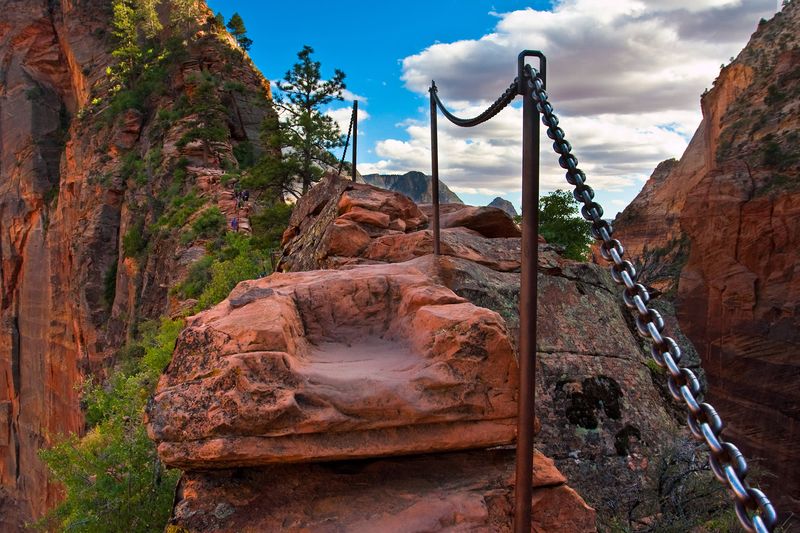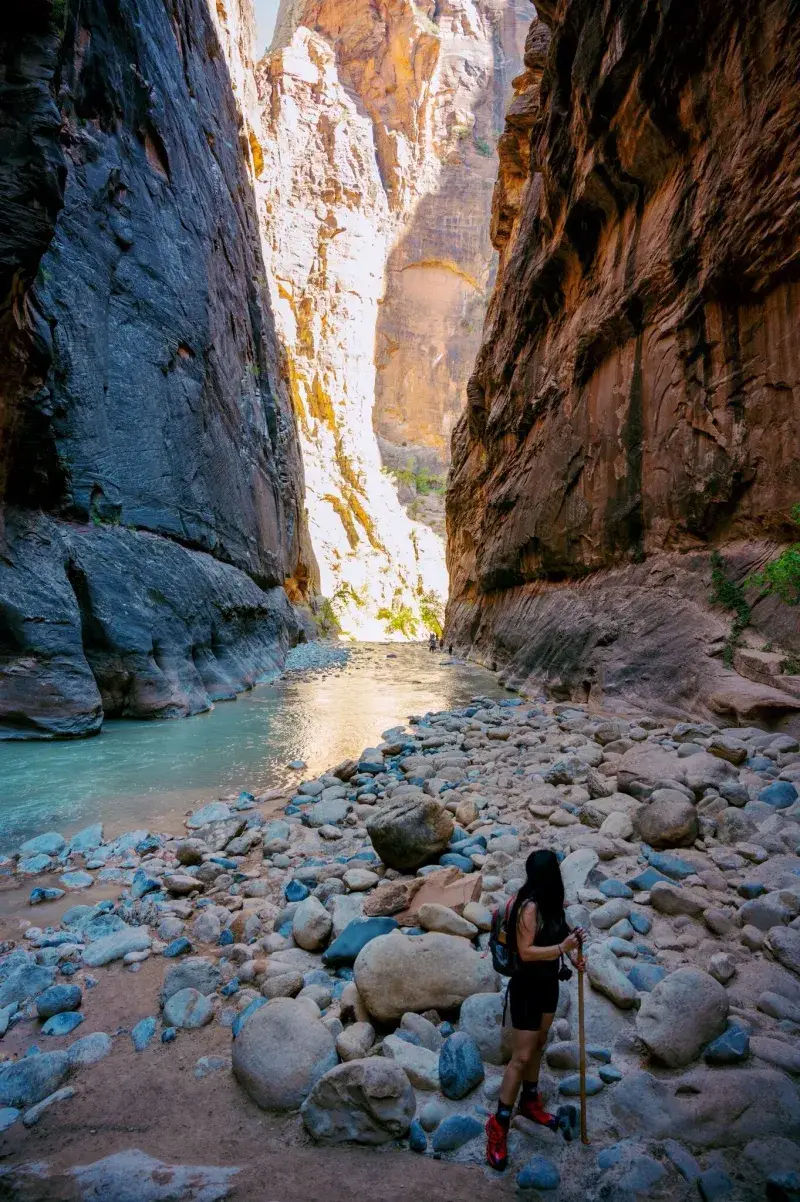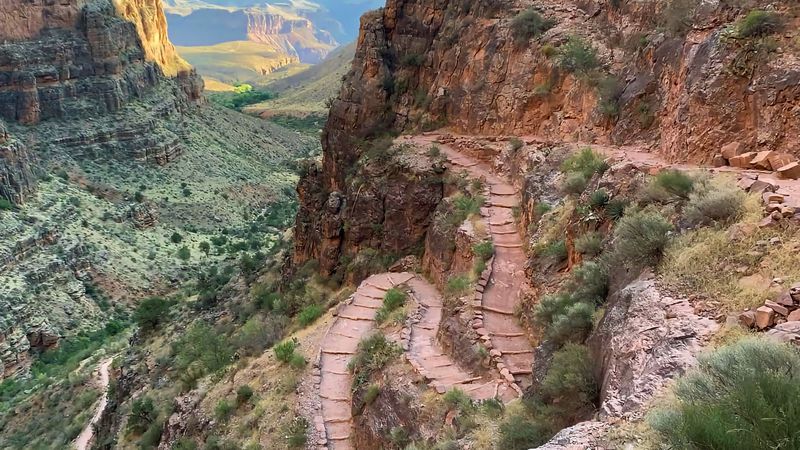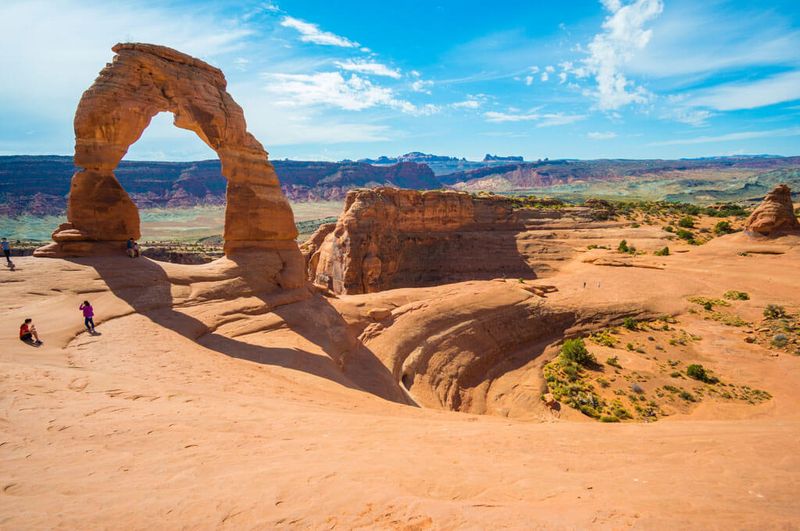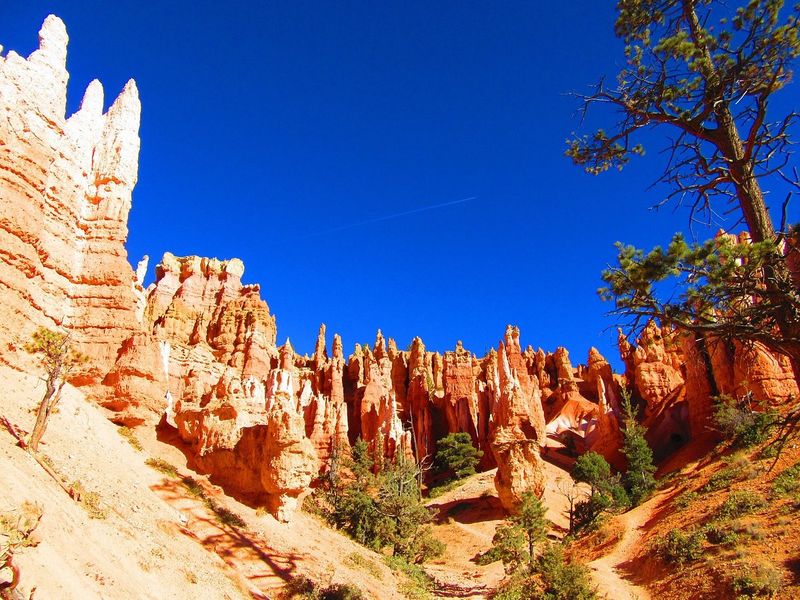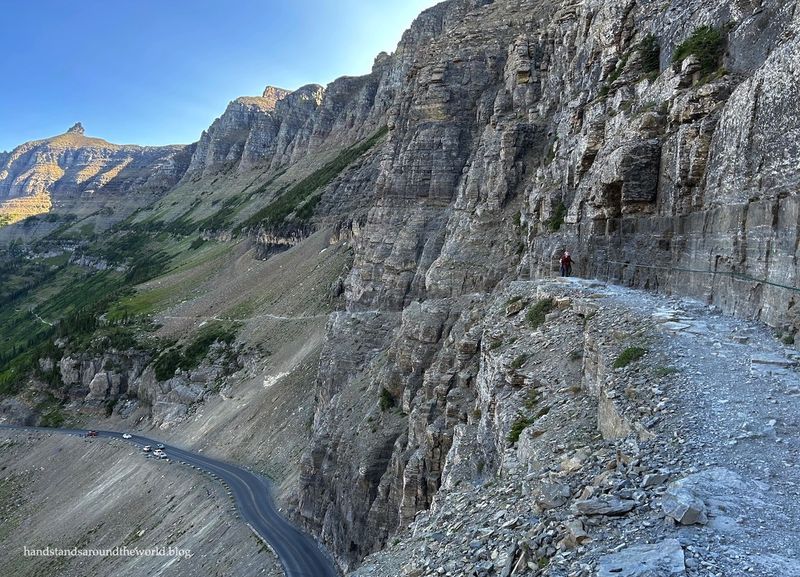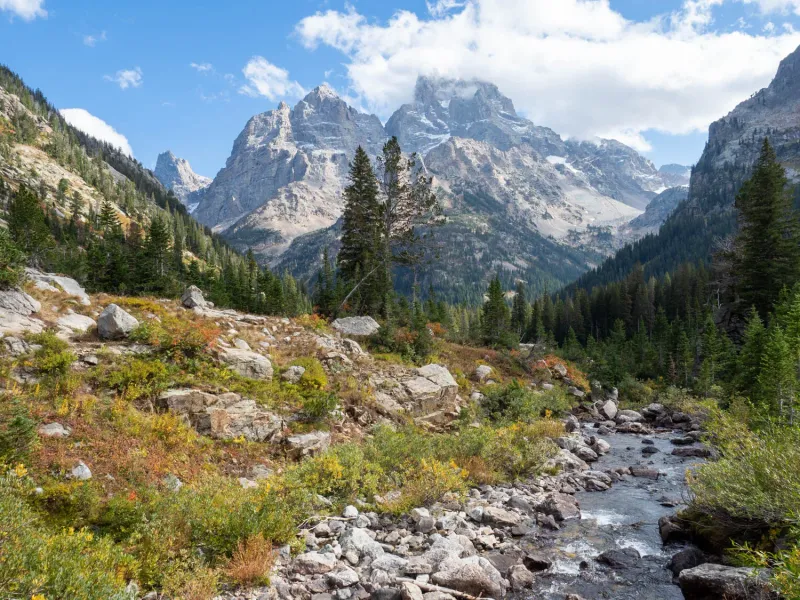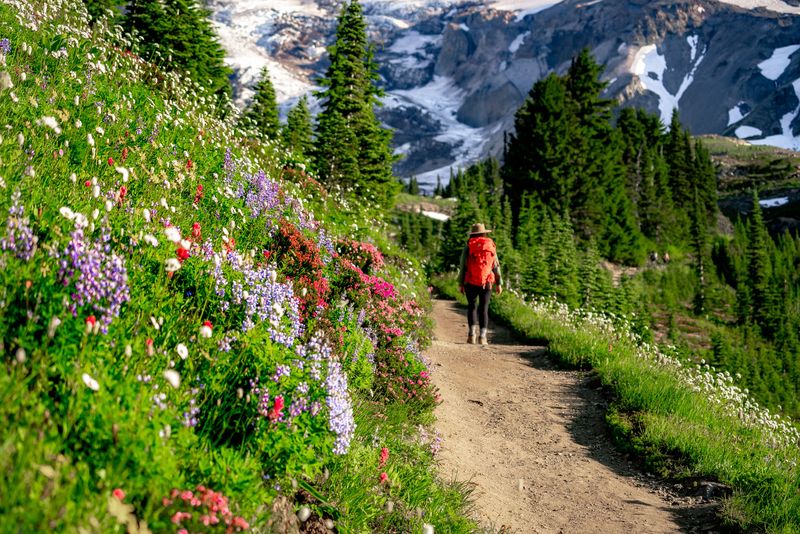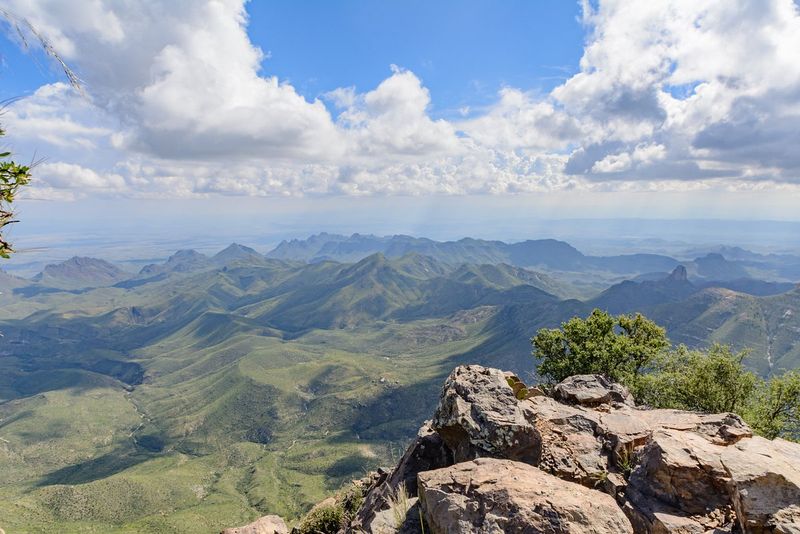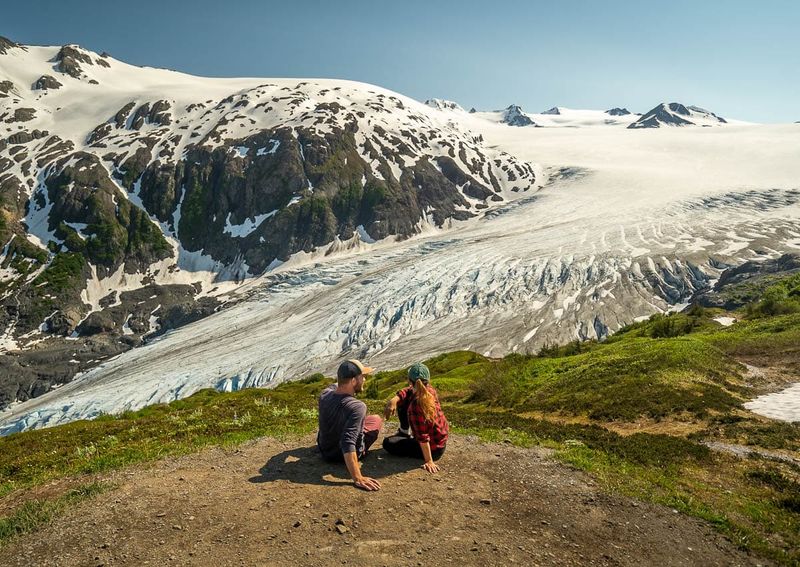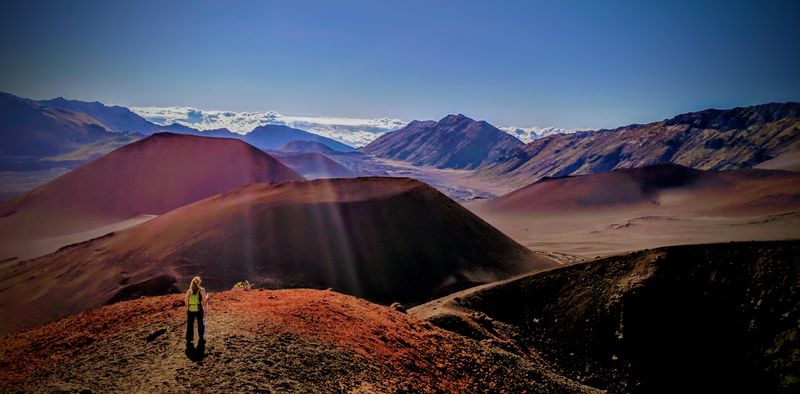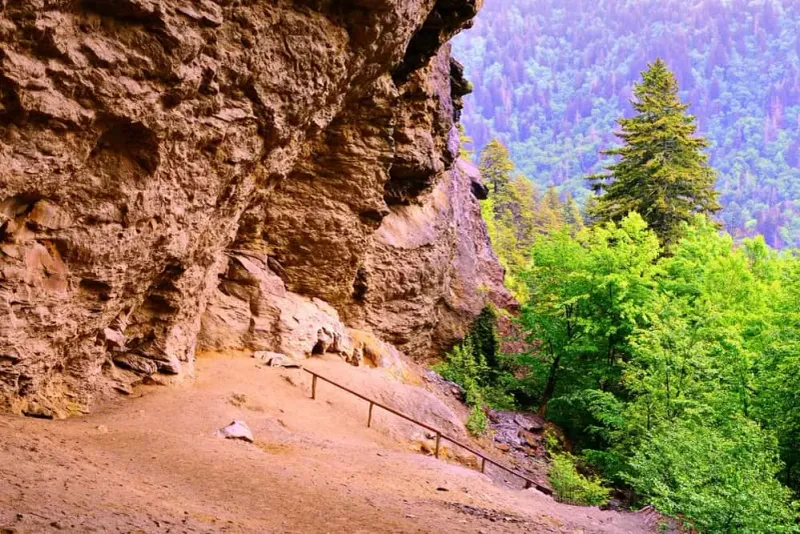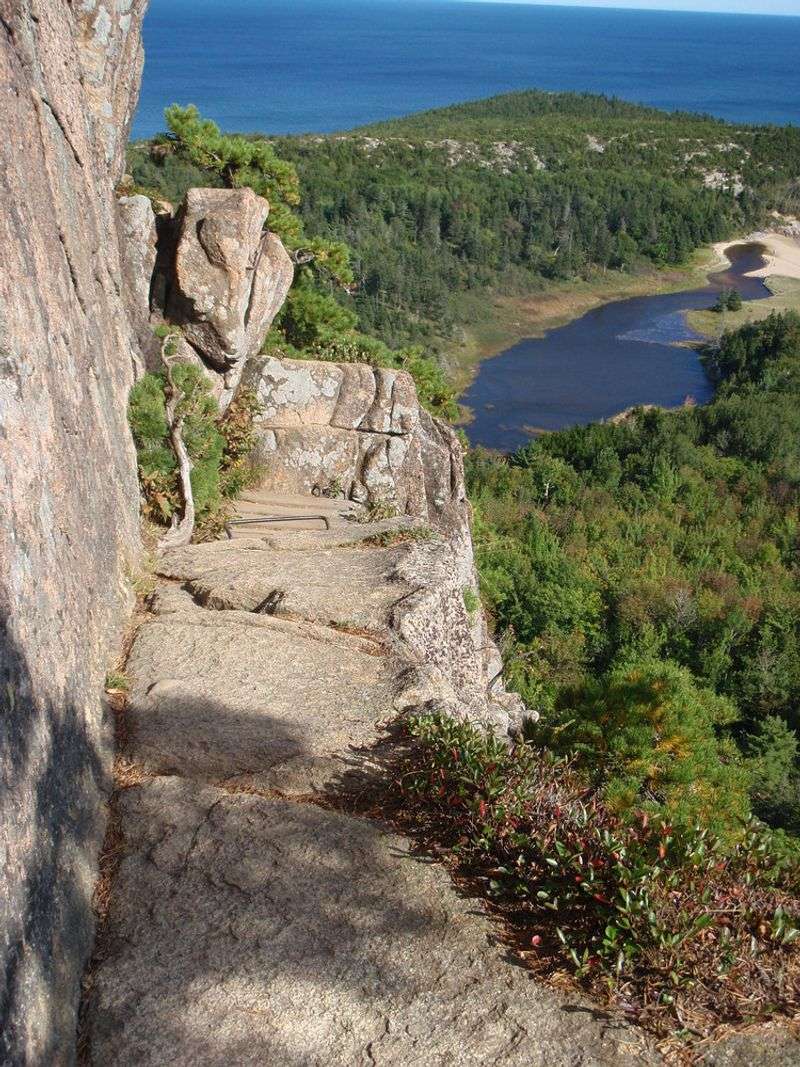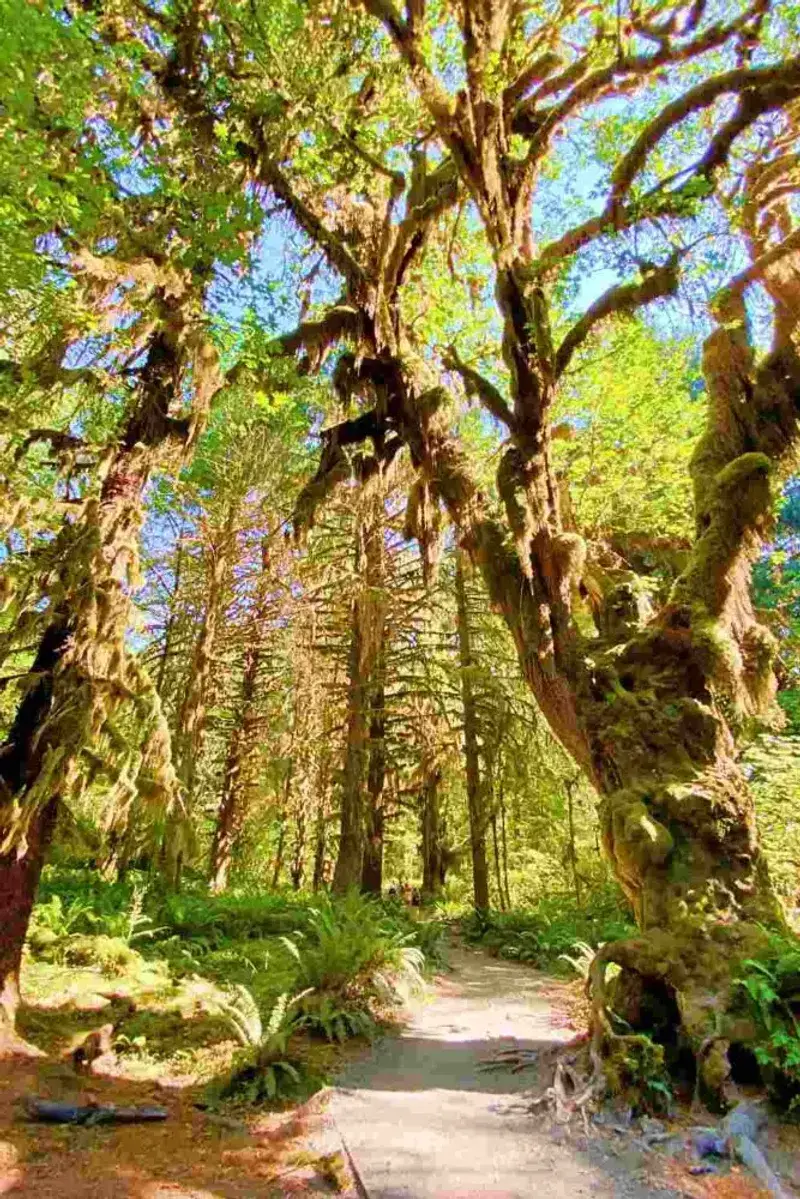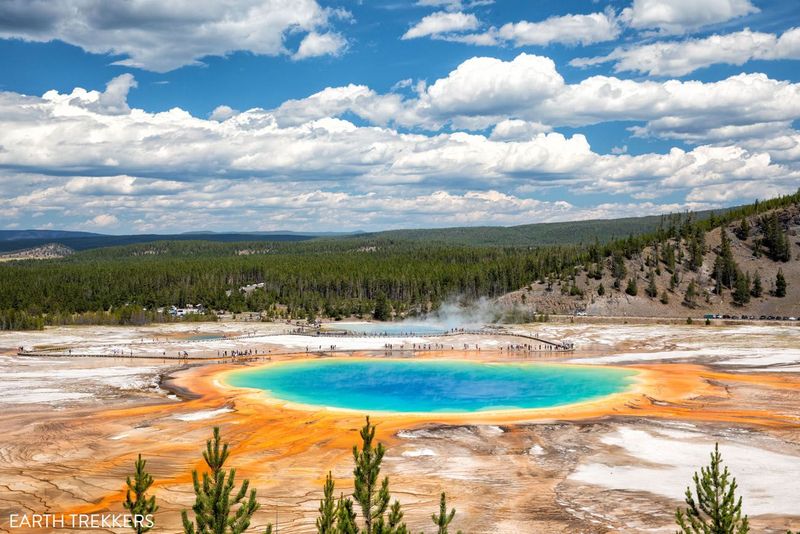America’s national parks hold some of the most breathtaking trails on Earth, from desert canyons to alpine meadows and volcanic craters. Whether you’re chasing waterfalls, climbing through slot canyons, or standing at the edge of ancient glaciers, these hikes offer unforgettable adventures for trekkers of all skill levels. Each trail tells its own story through stunning landscapes, unique geology, and wildlife encounters you won’t find anywhere else. Lace up your boots and get ready to explore the trails that define the American wilderness experience.
1. Angels Landing — Zion National Park, UT
Standing on top of Angels Landing feels like balancing on the spine of a sleeping dragon. This legendary trail ends with a half-mile scramble along a narrow ridge where steel chains bolted into sandstone are your best friends.
The exposure is real—1,500-foot drops on both sides make your heart race with every step. But the reward? Views of Zion Canyon that will live in your memory forever.
Since permits became required year-round through Recreation.gov lotteries, planning ahead is essential. Scout Lookout makes a worthy turnaround if you’re not ready for the chained finale.
2. The Narrows (Bottom-Up) — Zion National Park, UT
Forget traditional trails—this adventure trades dirt paths for a river highway flanked by towering sandstone walls. Wading through the Virgin River with canyon walls soaring 1,000 feet overhead creates a sense of wonder unlike any other hike.
Starting from the Temple of Sinawava, most day hikers don’t need permits for the bottom-up route. Just check flow conditions before you go, because high water can close the canyon fast.
Waterproof boots and a walking stick become your essential gear here. The farther upstream you venture, the narrower the canyon squeezes, turning each bend into a new revelation of sculpted rock and flowing water.
3. Bright Angel Trail to Havasupai Gardens — Grand Canyon National Park, AZ
Every step down Bright Angel Trail peels back millions of years of Earth’s history written in rock layers. This classic South Rim descent offers water stations, shade, and geology lessons at every turn—a rare luxury in Grand Canyon hiking.
Havasupai Gardens sits roughly 4.5 miles and 2,000 feet below the rim, making it a popular turnaround for day hikers. The oasis-like rest area with cottonwood trees provides welcome relief before the real challenge begins: climbing back up.
Remember the golden rule here—going down is optional, but coming up is mandatory. Save energy for the return journey, stay hydrated, and start early to beat afternoon heat.
4. Delicate Arch — Arches National Park, UT
Utah’s most photographed landmark rewards those willing to cross 3 miles of exposed slickrock under the desert sun. Delicate Arch rises like a natural cathedral, its improbable curve framing distant mountains in a view that graces license plates and postcards.
The trail from Wolfe Ranch climbs 538 feet with zero shade, so timing matters. Early morning or late afternoon light paints the sandstone in glowing oranges and reds while avoiding midday furnace conditions.
That final reveal—when the arch suddenly appears around a rock corner—stops everyone in their tracks. Bring plenty of water, sun protection, and a camera, because this icon deserves all three.
5. Queen’s Garden + Navajo Loop (Combination) — Bryce Canyon National Park, UT
Descending into Bryce Canyon’s hoodoo forest feels like stepping onto another planet. This 2.9-mile combination loop threads between towering rock spires that glow like embers at sunrise, connecting Sunrise and Sunset Points via the Rim Trail.
The Navajo Loop’s Wall Street section—a narrow slot between towering fins—ranks among the park’s most dramatic passages. Seasonal closures sometimes affect this section, so check ahead.
Queen’s Garden offers a gentler introduction to the hoodoos, including formations that spark imagination with their human-like shapes. The climb back to the rim reminds your legs they’ve been working, but postcard-worthy switchbacks make every step photogenic.
6. Highline Trail (Logan Pass → Granite Park Chalet) — Glacier National Park, MT
Few trails deliver alpine grandeur with such consistency as this 7.6-mile traverse above Going-to-the-Sun Road. Starting at Logan Pass, the path carves a ledge along the Garden Wall, offering continuous mountain vistas that make your neck sore from constant gawking.
Wildlife sightings happen frequently—mountain goats, bighorn sheep, and grizzlies all call this area home. Carrying bear spray isn’t optional; it’s survival insurance in grizzly country.
Using the park shuttle for a point-to-point hike saves your knees from backtracking. Snow lingers well into summer, and trail status changes with wildlife activity, so current conditions deserve a check before departure.
7. Cascade Canyon to “The Forks” — Grand Teton National Park, WY
Carved by ancient glaciers, Cascade Canyon showcases the Tetons’ raw power in a U-shaped valley that practically begs for exploration. The Jenny Lake boat shuttle (seasonal) cuts miles off the approach, letting you focus energy on the canyon itself.
Moose-friendly meadows line the route, where willows and wildflowers create habitat for these massive mammals. Keep respectful distances—moose may look gentle but defend their space aggressively when surprised.
The Forks marks where the canyon splits into North and South branches, both beckoning onward. Modest elevation gain compared to summit routes makes this accessible for trekkers seeking Teton beauty without technical climbing challenges.
8. Skyline Loop — Mount Rainier National Park, WA
Paradise earned its name, and the Skyline Loop proves why with every wildflower-carpeted step. This 5.5-mile circuit climbs 1,700 feet through subalpine meadows that explode with color in summer, all beneath Rainier’s massive glaciated dome.
Timing your visit matters tremendously—early-season snow makes this route genuinely hazardous, sometimes lingering into July. Always check current conditions, because what looks like a trail might be a snow slope requiring mountaineering skills.
Potential glacier views and resident marmots add entertainment value. The loop can be hiked in either direction, though many prefer clockwise for more gradual elevation gain and better photo angles of the mountain.
9. South Rim Loop — Big Bend National Park, TX
Where else can you stand on a mountain rim gazing into another country? The Chisos Mountains’ most celebrated loop stretches 12.5 miles with 1,700 feet of elevation gain, delivering panoramic views across the Rio Grande into Mexico.
Desert hiking demands respect—start early, carry abundant water, and understand that heat exhaustion is a real threat. Seasonal wildlife closures sometimes restrict Chisos access, and 2025-2027 construction may affect the area, so checking park alerts before departure is critical.
The Pinnacles and Laguna Meadows create natural waypoints on this loop. Big Bend’s remoteness means self-sufficiency matters more than at busier parks; preparation separates memorable adventures from dangerous situations.
10. Harding Icefield Trail — Kenai Fjords National Park, AK
Climbing from temperate rainforest to an ice-age panorama in just 8.2 miles sounds impossible until you’re standing there, breathless and awestruck. The Harding Icefield Trail tackles serious elevation above Exit Glacier, earning its strenuous rating with every steep switchback.
Weather changes happen with startling speed in Alaska—sunshine can vanish behind storm clouds in minutes. Packing layers isn’t a suggestion; it’s the difference between comfortable and hypothermic.
That first glimpse of the icefield—a seemingly endless expanse of white stretching to distant peaks—makes the lung-burning climb worthwhile. Few trails offer such dramatic ecosystem transitions or such tangible connections to Earth’s glacial past.
11. Keoneheʻeheʻe (Sliding Sands) — Haleakalā National Park, HI
Stepping onto this trail feels like descending into another world—or maybe Mars. Starting at roughly 10,000 feet elevation, Keoneheʻeheʻe plunges into Haleakalā’s massive volcanic crater through otherworldly terrain of red cinders and black lava.
Altitude, relentless sun, and complete lack of water make this deceptively challenging despite downhill beginnings. What goes down must climb back up, and thin air makes that return ascent brutal for unprepared hikers.
Popular out-and-back distances vary based on fitness and ambition. Planning conservatively and checking park guidance for appropriate turnaround points prevents dangerous overextension. The alien landscape rewards every step, but respecting this environment’s harsh realities keeps adventures safe.
12. Alum Cave Trail to Mount LeConte — Great Smoky Mountains National Park, TN
Arch Rock’s natural tunnel, Alum Cave’s dramatic bluffs, airy ridge walking, and a historic summit lodge—this 10-mile round-trip packs more highlights than trails twice its length. As the shortest route to Mount LeConte, it attracts crowds that match its popularity.
Limited parking creates morning competition for spots, especially on weekends. Arriving early or choosing weekdays improves your chances of starting without frustration.
LeConte Lodge recently celebrated its 100th anniversary, maintaining its tradition of backcountry hospitality accessible only by foot. Reservations book far in advance for overnight stays. Day hikers still enjoy the summit’s panoramic rewards before descending back through the Smokies’ lush forest.
13. Beehive Loop — Acadia National Park, ME
Short, spicy, and utterly unforgettable—that’s Beehive in three words. This rung-and-ladder route up a granite dome delivers maximum adrenaline in minimum distance, with ocean views that make your palms sweat (or maybe that’s just the exposure).
Significant cliff exposure isn’t for everyone; those uncomfortable with heights should stick to Acadia’s gentler trails. Peregrine falcon nesting sometimes prompts seasonal closures on nearby cliff routes, so checking current advisories prevents wasted trips.
The loop returns via a gentler descent, giving your nerves time to recover. For thrill-seekers who love scrambling and don’t mind some aerial work, Beehive ranks among the East Coast’s most exciting short hikes.
14. Hoh River Trail to Five-Mile Island — Olympic National Park, WA
Primeval rainforest wraps around you like a green embrace on this trail through one of America’s most enchanting ecosystems. Moss-draped bigleaf maples create cathedral-like spaces, while the emerald Hoh River provides a constant soundtrack of flowing water.
Five-Mile Island offers facilities and a natural turnaround point for day hikers. The relatively flat terrain lets you focus on soaking in the forest’s magic rather than watching your footing on steep sections.
Road access to the Hoh area has faced periodic closures, so verifying current road status before departure saves disappointment. When conditions cooperate, this trail delivers temperate rainforest immersion that feels worlds away from everyday life.
15. Grand Prismatic Overlook + Fairy Falls — Yellowstone National Park, WY
Combining Yellowstone’s most photogenic hot spring view with a graceful waterfall creates the perfect half-day adventure. The Grand Prismatic Overlook sits just 0.6 miles from the Fairy Falls trailhead, offering bird’s-eye perspective on the spring’s rainbow colors that ground-level boardwalks can’t match.
Fairy Falls adds another 1.6 miles one-way, where a 200-foot cascade tumbles through forest in elegant contrast to the thermal features. The relatively flat approach makes this accessible for families and casual hikers.
Early morning visits often find better light and fewer crowds, though thermal features look spectacular any time. This classic pairing showcases Yellowstone’s diversity—fire and water, geology and biology, all in one memorable outing.
